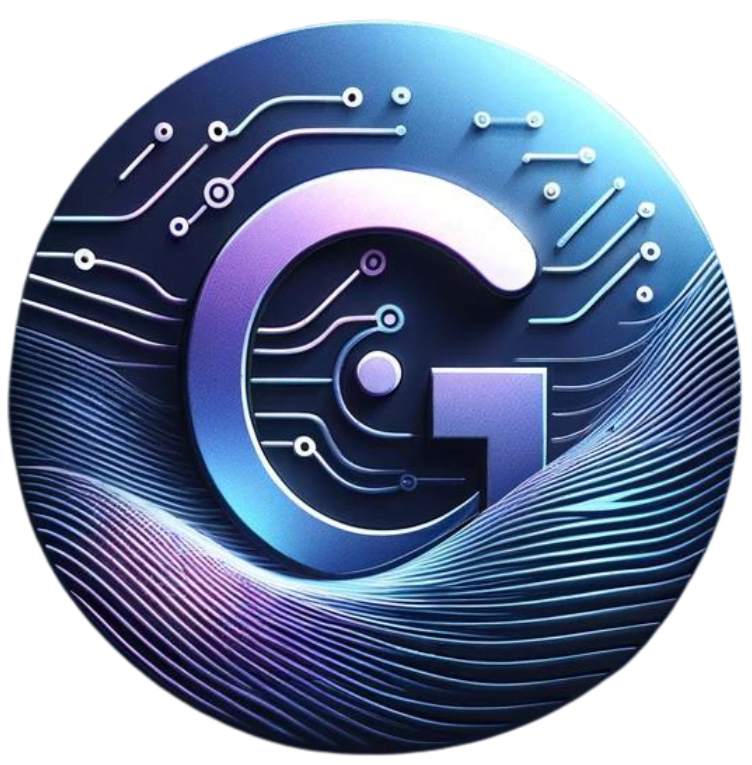Email Marketing in the AI Age: Less Robots, More Results

AI email marketing works best when it feels human. In 2025, the winning teams use AI to speed research. They persEmail Marketing in the AI Age: Less Robots, More Results
AI email marketing works best when it feels human. In 2025, the winning teams use AI to speed research. They personalize segments and test smarter. These teams keep brand voice, compliance, and deliverability front and center. This guide shows how to get more clicks and revenue without sounding like a robot.

AI Email Marketing Fundamentals: Trust, Deliverability, and Voice
How DMARC + domain alignment power AI email marketing
Before fancy tactics, lock down deliverability. Set up SPF, DKIM, and DMARC, and align your visible “From” domain with your authenticated domain. Google and Yahoo now expect this from bulk senders, or your emails risk the spam folder. Refer to Google’s official guidance and FAQs. Also, check Yahoo’s sender best practices for the current requirements (Google sender guidelines, Google FAQ, Yahoo best practices). Google Help+2Google Help+2
One-click unsubscribes (yes, it matters for AI email marketing)
If you send ~5,000+ messages/day, Gmail requires easy, one-click unsubscribes for commercial mail. Without this, your reputation and inbox placement can be hurt. Details here: Google FAQ and a plain-English explainer you can share with your team (Google FAQ, Valimail overview). Google Help+1
Measuring What Matters in AI Email Marketing
Beyond opens: CTR, orders, and revenue per recipient
Apple’s Mail Privacy Protection (MPP) inflates opens and hides location/IP, so treat open rate as directional only. Shift dashboards to CTR, placed-order rate, and revenue per recipient. Primer and impact summaries: Litmus’ MPP hub and explainers (Litmus MPP resources, Paubox overview). Litmus+1
Benchmarks for AI email marketing performance
Use current-year, industry-specific benchmarks for realistic goals. Focus on open rates, click rates, conversion rates, and RPR. Klaviyo’s 2025 data and Litmus’ State of Email report are solid sources. They include Klaviyo 2025 benchmarks and Litmus 2025 ROI. Klaviyo+1
Segmentation That Feels Human—Powered by AI Email Marketing
Lifecycle segments that unlock AI email marketing wins
Start human: lifecycle stage, recency/frequency, category interest, and AOV. Layer AI for clustering and next-best-offer predictions—constrained by brand rules and offer guardrails. Helpful primers: Salesforce on AI in email/personalization (Salesforce: AI in email, Salesforce: AI personalization). Salesforce+1
Dynamic content & interactivity that boost engagement
Short polls, dynamic blocks, and interactive modules continue to lift engagement when used sparingly and accessibly. See Litmus’ 2025 recap for what’s trending now (Litmus 2025 recap). Litmus
Creative Workflows for Faster, Better AI Email Marketing
Prompts for subject lines and preheaders (without sounding robotic)
Use AI for variants and speed—not for brand voice. Example prompt you can reuse:
“Rewrite for [Segment = first-time purchasers]. Keep sentences under 16 words. Maintain our voice. It should be friendly, plain-spoken, and confident. Include one benefit-led CTA. Generate 3 subject lines and 3 preheaders that avoid clickbait.”
(Then human-edit for tone and compliance.)
Plain-text vs. designed templates in AI email marketing tests
Test a clean, accessible plain-text style against your designed template. Prioritize the first 100 words, CTA framing, and image-on/off readability. For scale, move beyond A/B to bandit/holdout once volume allows (benchmarks: Klaviyo 2025). (Klaviyo 2025 blog summary). Klaviyo
Accessibility and Compliance in AI Email Marketing
Readability, alt text, and mobile performance
Aim for 16px+ base font, strong contrast, and real text (not text baked into images). Write meaningful alt text and ensure a good no-image experience. Accessibility remains important—and under-resourced—per the 2025 Litmus recap (Litmus 2025 recap). Litmus
Consent, complaints, and mailbox-provider changes
Keep complaint rates low, remove hard bounces quickly, and document consent flows. Google/Yahoo rules tightened in 2024; follow their guidance to protect sender reputation (Google guidelines, Proofpoint summary of Google/Yahoo changes). Google Help+1
From Strategy to Scale: Operationalizing AI Email Marketing
A/B and bandit tests tailored to AI email marketing
Prioritize tests with proven impact: offer framing, CTA position/wording, hero vs. plain-text, and preheader clarity. Use holdouts to isolate incremental lift in the MPP era (see benchmarks above). (Klaviyo 2025 benchmarks). Klaviyo
Automations to launch first: welcome, abandon, win-back
Map the big five: Welcome, Browse/Cart Abandon, Post-Purchase, Win-Back, and Back-in-Stock/Price Drop. Use AI to tailor variants by segment and intent—while humans keep tone and offers on-brand. Primer: Salesforce’s AI email marketing guide (Salesforce guide). Salesforce
One-Month Modernization Sprint (copy/paste)
Week 1 – Foundation
- Verify SPF/DKIM/DMARC + alignment; audit list hygiene & consent flows. (Google FAQ) Google Help
Week 2 – Creative & AI assist
- Build a brand-safe prompt library; redesign templates for accessibility and speed. (Litmus 2025 recap) Litmus
Week 3 – Testing & measurement
- Launch A/Bs on CTA framing and hero vs. plain-text; track CTR/RPR not just opens. (Klaviyo 2025 benchmarks, Litmus MPP hub) Klaviyo+1
Week 4 – Scale & govern
- Add predictive send-time/offer models; expand triggers (win-back, back-in-stock). (Salesforce AI in email) Salesforce
Further reading your team will actually use
Summary of the 2024 Google/Yahoo rules: Proofpoint explainer. Proofpointonalize segments and test smarter. They keep brand voice, compliance, and deliverability front and center. This guide shows how to get more clicks and revenue without sounding like a robot.
Google sender rules & bulk-sender changes: Guidelines and FAQ. Google Help+1
Yahoo sender best practices: Deliverability basics. Senders
Litmus 2025 ROI & trends: ROI infographic and State of Email hub. Litmus+1
Klaviyo 2025 benchmarks: Industry metrics & RPR. Klaviyo
Apple MPP impact: Litmus MPP center and an explainer for non-technical stakeholders (Paubox). Litmus+1
Why email still wins (and what’s changed)
- ROI remains elite. Litmus’ 2025 data shows strong returns: a large share of leaders report $10–$50+ back for every $1 invested. Litmus
- Benchmarks are stable but uneven by industry. If you want realistic open/click/conversion ranges, use up-to-date, industry-specific benchmarks (not decade-old “20% open rate” rules of thumb). Klaviyo
- Opens are noisy. Apple’s Mail Privacy Protection (MPP) continues to inflate opens. It also masks location/IP. Therefore, treat open rate as a directional, not a KPI. Twilio+2Constant Contact+2
- Deliverability rules got stricter. Google and Yahoo require these protocols: SPF, DKIM, and DMARC for bulk senders. You need to align your “From” domain. Pass authentication or expect junking. Google Help+2Proofpoint+2
The “Less Robots, More Results” Playbook
1) Nail trust & deliverability first
- Authenticate with SPF, DKIM, DMARC, and make sure the domain in your From: aligns with what you authenticate. Google Help
- Send from a branded domain (not a generic ESP subdomain) and use a steady cadence to protect reputation.
- Honor one-click unsubscribes and suppress bounces/complaints quickly (now table stakes with Gmail/Yahoo). Proofpoint+1
2) Redefine success metrics for the MPP era
- Prioritize click-through rate, revenue per recipient, placed-order rate, and RPR over opens. Klaviyo
- Use holdout tests to isolate incremental lift when MPP muddies open-based attribution. Twilio
3) Put AI in the right jobs (and keep humans in the loop)
Great for AI: subject line variants, preheader options, content outlines, segment-level copy tweaks, predictive send-time and next-best-offer modeling. Salesforce+1
Keep human: voice/tone QA, value proposition, compliance, and final creative judgment.
Proof it works: Marketers report tangible ROI from GenAI adoption; personalization and efficiency gains are the biggest drivers. TechRadar
Quick prompt you can adapt (example):
“Rewrite this email for [Segment = first-time purchasers]. Keep sentences under 16 words. Use our brand voice, which is friendly, plain-spoken, and confident. Include one benefit-led CTA. Generate 3 subject lines and 3 preheaders that avoid clickbait.”
4) Segment like a human, personalize with AI
- Start with clear, human segments: lifecycle stage, last action, category interest, AOV, and frequency.
- Let AI help with clustering and predicting next purchase windows—but constrain it with brand rules and offer guardrails. McKinsey & Company
- Use dynamic content (polls, interactive blocks) for engagement—these tactics are trending up in 2025. Litmus
5) Test smarter (not just more)
- A/B testing meaningfully lifts ROI; prioritize offer framing, CTA placement, hero image vs. plain-text, and first 100 words. Emailmonday
- Move from “winner-take-all” to bandit/holdout approaches when you have enough volume.
6) Design for accessibility & speed
- Use a 16px+ base font. Ensure high contrast and real text, not text baked into images. Use descriptive link text like “View receipt” and provide meaningful alt text. Accessibility is rising in importance—and still under-resourced. Litmus
- Keep images light and deliver a readable no-image experience.
7) Upgrade your lifecycle, not just your newsletter
- Map and automate the big five: Welcome, Browse/Cart Abandon, Post-Purchase, Win-Back, Back-in-Stock/Price Drop.
- AI helps generate variants tuned to the trigger and user intent (e.g., “post-purchase: care tips + cross-sell”). Salesforce
Compliance & Reputation Mini-Checklist (copy/paste)
- ✅ SPF, DKIM, DMARC set and aligned to your visible From: domain. Google Help
- ✅ One-click unsubscribe and visible physical mailing address. (Also required by major mailbox providers.) Proofpoint
- ✅ Respect MPP: don’t gate logic on opens alone; use clicks and conversions. Twilio
- ✅ Suppress hard bounces/complaints within 24–48 hours; monitor spam-trap hits. Proofpoint
Benchmarks & planning guardrails
When forecasting performance or defending budget, lean on current-year sources:
- Industry-specific benchmarks for open/click/conversion and revenue per recipient. Klaviyo
- ROI ranges to frame investment decisions with leadership. Litmus
- Trends & tactic effectiveness (what’s actually moving the needle this year). Litmus
Putting it together: a one-month modernization sprint
Week 1 – Foundation:
- Verify SPF/DKIM/DMARC; fix alignment. Audit list hygiene & consent flows. Google Help
- Define 3 core segments and 3 lifecycle triggers to automate.
Week 2 – Creative & AI assist:
- Build a brand-safe prompt library (subject lines, body copy, CTAs). Salesforce
- Redesign templates for accessibility and fast load; draft dynamic blocks. Litmus
Week 3 – Testing & measurement:
- Launch A/B tests on CTA framing and hero vs. plain-text layout; track CTR/RPR. Emailmonday+1
Week 4 – Scale & govern:
- Add predictive send-time and next-best-offer models; expand triggers (win-back, back-in-stock). Salesforce
- Write a 1-pager on KPIs post-MPP (clicks, orders, RPR) for internal alignment. Twilio
Final thought
AI should amplify your strategy, not replace your voice. If the copy reads like a bot wrote it, the fix isn’t “more AI.” Instead, focus on better prompts, tighter brand rules, and human editing. Keep the empathy and clarity; let the machines handle the heavy lifting behind the scenes.
Further reading & sources you can share with your team:
- Google sender guidelines (authentication & alignment). Google Help
- Proofpoint on Gmail/Yahoo 2024 requirements (bulk-sender rules). Proofpoint
- Litmus: 2025 ROI & trends (fresh stats and priorities). Litmus+1
- Klaviyo: 2025 benchmarks by industry (RPR, conversion, click). Klaviyo
- Twilio/Segment on MPP & iOS 18 (why open rate ≠ truth). Twilio
- Salesforce: AI in email marketing primer (use cases & definitions). Salesforce
Subscribe for Marketing and Tech Tips.

